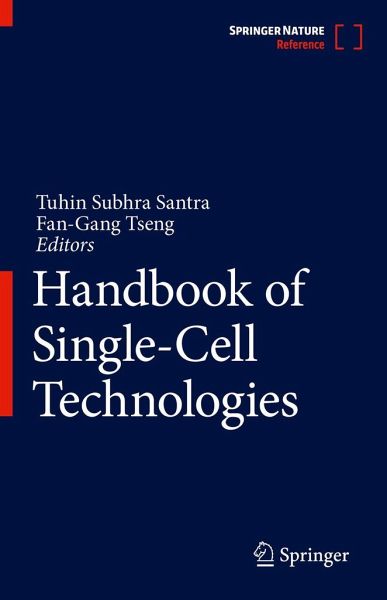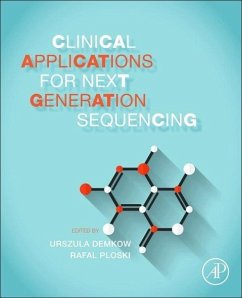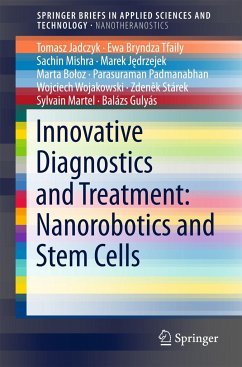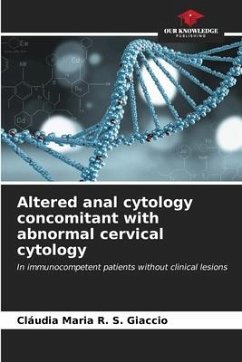
Handbook of Single-Cell Technologies
Versandkostenfrei!
Nicht lieferbar
This book provides a brief overview of single-cell analysis using recent advanced technologies. The different sections cover different aspect of single cell analysis and applications with their advantages, limitations, and future challenges. The book has covered how different physical energies such as optical, electrical, and mechanical energy have been applied for single cell therapy and analysis. The recent advanced micro/nanofluidic devices have been employed for single-cell counting, manipulation, cultivation, separation, isolation, lysis, printing and patterning and host-viral interaction...
This book provides a brief overview of single-cell analysis using recent advanced technologies.
The different sections cover different aspect of single cell analysis and applications with their advantages, limitations, and future challenges. The book has covered how different physical energies such as optical, electrical, and mechanical energy have been applied for single cell therapy and analysis. The recent advanced micro/nanofluidic devices have been employed for single-cell counting, manipulation, cultivation, separation, isolation, lysis, printing and patterning and host-viral interaction at single-cell level. Various chemical approaches for single-cell analysis have been discussed, such as liposome mediated materials transfer at single-cell and their analysis, discovery of antibody via single-cell, high-throughput screening of antigen-specific antibody-secreting cells, and biomolecular secretion analysis of individual cells. Moreover, different single-cell omics such as genomics, proteomics and transcriptomics have been discussed using microfluidic technologies as well as conventional approaches.
The role of single cell analysis in system biology and biocatalysis have been discussed in detail. The book describes single-cell phenotyping of heterogeneous tissue, stimulation, and instant reaction quenching technology for biochemical kinetic analysis, large scale single-cell assay for the identification of biocatalysts and analytical techniques for single-cell studies in microbiology. The role of single-cell analysis in cancer, such as single-cell adhesion and cancer progression, single-cell technologies for cancer therapy, analytical technology for single cancer cell analysis, and biophysical markers for cancer cell analysis have been discussed. The flow cytometry based high throughput single-cell analysis have been well emphasized. Finally this book has covered single-cell electrophysiology, single-cell sensing and size measurement using mechanical and microwave resonators, molecular force spectroscopy for cell adhesion measurement, micro-tweezers and force microscopy techniques for single-cell mechanobiological analysis, mass spectrometry and acoustic tweezers for single-cell manipulation and analysis.
This book is intended for academic and industrial researchers, undergraduate and graduate students in the fields of biomedical engineering, bio-micro/nanoengineering, and bio-micro/nano fabrication for single-cell analysis. It can be used for courses on bio-MEMS/bio-NEMS, biomicrofluidics, bio-micro/nanofabrications, micro/nanofluidics, biophysics, single cell analysis, bionanotechnology, drug delivery systems and biomedical microdevices. Collective contributions from respected experts, have brought diverse aspects of single-cell technologies in a single hand book. This will benefit researchers and practitioners in the biotechnology industry for different diseases analysis, therapeutics, diagnostics, drug discovery, drug screening etc.
In addition to hard copies, the book will be available online and will often be updated by the authors.
The different sections cover different aspect of single cell analysis and applications with their advantages, limitations, and future challenges. The book has covered how different physical energies such as optical, electrical, and mechanical energy have been applied for single cell therapy and analysis. The recent advanced micro/nanofluidic devices have been employed for single-cell counting, manipulation, cultivation, separation, isolation, lysis, printing and patterning and host-viral interaction at single-cell level. Various chemical approaches for single-cell analysis have been discussed, such as liposome mediated materials transfer at single-cell and their analysis, discovery of antibody via single-cell, high-throughput screening of antigen-specific antibody-secreting cells, and biomolecular secretion analysis of individual cells. Moreover, different single-cell omics such as genomics, proteomics and transcriptomics have been discussed using microfluidic technologies as well as conventional approaches.
The role of single cell analysis in system biology and biocatalysis have been discussed in detail. The book describes single-cell phenotyping of heterogeneous tissue, stimulation, and instant reaction quenching technology for biochemical kinetic analysis, large scale single-cell assay for the identification of biocatalysts and analytical techniques for single-cell studies in microbiology. The role of single-cell analysis in cancer, such as single-cell adhesion and cancer progression, single-cell technologies for cancer therapy, analytical technology for single cancer cell analysis, and biophysical markers for cancer cell analysis have been discussed. The flow cytometry based high throughput single-cell analysis have been well emphasized. Finally this book has covered single-cell electrophysiology, single-cell sensing and size measurement using mechanical and microwave resonators, molecular force spectroscopy for cell adhesion measurement, micro-tweezers and force microscopy techniques for single-cell mechanobiological analysis, mass spectrometry and acoustic tweezers for single-cell manipulation and analysis.
This book is intended for academic and industrial researchers, undergraduate and graduate students in the fields of biomedical engineering, bio-micro/nanoengineering, and bio-micro/nano fabrication for single-cell analysis. It can be used for courses on bio-MEMS/bio-NEMS, biomicrofluidics, bio-micro/nanofabrications, micro/nanofluidics, biophysics, single cell analysis, bionanotechnology, drug delivery systems and biomedical microdevices. Collective contributions from respected experts, have brought diverse aspects of single-cell technologies in a single hand book. This will benefit researchers and practitioners in the biotechnology industry for different diseases analysis, therapeutics, diagnostics, drug discovery, drug screening etc.
In addition to hard copies, the book will be available online and will often be updated by the authors.













